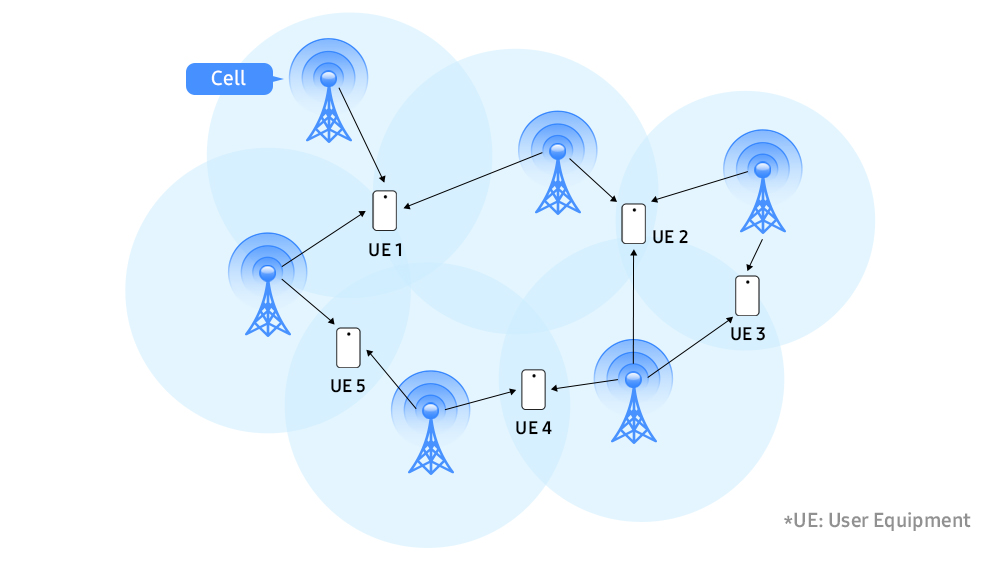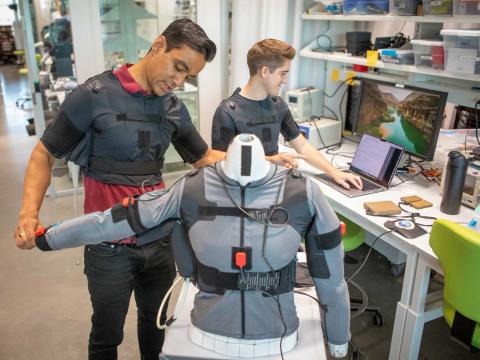Telecom Industry Eyes Artificial Intelligence Uses for Radio Access Networks

The use of artificial intelligence (AI) in communications networks is quickly advancing, especially with AI applied to radio access networks, with so-called AI-RAN.
At the core of mobile wireless telecommunications (telecom) systems, radio access networks—also known as RAN—provide devices, phones and computers a link to a telecom system’s core cellular network through a radio link.
Radio access networks have greatly evolved through the generations of mobile communication—and will evolve further with the 6G network concepts that telecom companies are now developing. This includes the concept of O-RAN—the development of open, interoperable hardware and software for wireless networks—vRAN, or virtualized radio access networks, which allow telecommunications operators to leverage software-defined network functions instead of hardware, as well as the concept of AI-RAN, introduced by telecom companies last year at the Mobile World Congress.
The industry created the AI-RAN Alliance last year to support the development of AI-RAN. The 26-member organization includes telecom, electronics and software companies, and academia, such as Ericsson, Microsoft, Nokia, Northeastern University, Samsung, SoftBank, T-Mobile and the University of Tokyo.
Categorizing their efforts as “smarter connections to sustain human progress,” the AI-RAN Alliance aims to improve AI-RAN infrastructure, enhance the performance of radio access networks and enable new AI applications for those networks.
“Over the course of five generations of technological innovation, RAN has vastly expanded the boundaries of connectivity, enabling the seamless communication experiences we rely on today,” the AI-RAN Alliance stated in a December 2024 white paper that outlined their vision and mission. “Despite these advances, RAN’s full potential remains largely untapped. Now, with the power of artificial intelligence, we stand on the brink of a new era for RAN, one that is more adaptive, intelligent, performant, efficient and versatile.”
The telecom industry had already been robustly pursuing AI for other uses in their networks and services, such as in their data centers, in compute operations, and for edge AI applications. Korea’s SK Telecom Co., for example, unveiled a strategy last year to implement an “AI Infrastructure Superhighway.”
With AI-RAN, the industry so far sees applying AI to radio access networks in three categories. One category, which they are calling “AI-for-RAN,” could improve network efficiencies and capacity in preparation for advancements into 6G.
Another application, “AI-and-RAN” features converged computer-and-communications infrastructure that would run radio access networks with AI workloads, in particular generative AI applications.
The third category is “AI-on-RAN,” which would examine the radio interface requirements for running AI and generative AI applications, with an aim to improve latency and throughput, and reduce jitter and packet delays.
The capabilities offer possible performance improvements, including optimization of radio resources and spectrum efficiencies, with the ability to dynamically adapt to spectrum conditions and shifting network traffic. The concepts could also improve network capacity and the user experience, and reduce infrastructure needs, such as decreasing the need for base stations, according to the alliance.
Companies are also looking into AI-native radio access networks and seeing how radio access network infrastructure could be used for AI application workloads not necessarily linked to RAN-specific operations, the alliance indicated.
For instance, South Korea’s Samsung Electronics Co., a founding member of the alliance, is demonstrating proof of concept applications of AI-RAN. One use case is harnessing the AI technology “to improve the performance of channel estimation technology for estimating the state of wireless channels where data is transmitted between base stations and mobile phones,” the company explained in a December 31 statement.
“The results showed that the downlink data throughput from the base station to the mobile phone and the uplink data throughput from the mobile phone to the base station were significantly improved compared to 5G RAN,” the company stated. “In addition, it was shown that energy efficiency was enhanced by applying power adaptively according to the strength of transmitted signals.”

This AI is different. This AI is embedded in the radio implementation to improve the radio performance.
In March, Samsung Electronics announced a signed agreement with KDDI Research Inc., the research and development arm of Japanese telecommunications service provider KDDI. Together, the organizations will conduct joint research into the application of AI in next-generation mobile communication networks, with a focus on how AI can apply to distributed multiple-input multiple-output, or D-MIMO systems. Hopefully, the technologies will “enable higher transmission speeds at the user level” and increase capacity across a network.
“As 6G standardization gains momentum with AI technology expanding across industries, the two companies aim to enhance overall network performance by applying AI to MIMO, technologies,” the companies said in a March 6 release. “MIMO systems increase transmission speed and expand coverage by utilizing multiple antennas to transmit and receive signals. In contrast to traditional MIMO systems that transfer data in a single-cell network, D-MIMO systems deploy multiple cells to offer advantages such as improved performance in coverage boundary areas and the network overall.”
Meanwhile, Japan’s SoftBank Corp., a co-founder of the AI-RAN Alliance, is pursuing several partnerships to develop its AI-RAN solutions for its networks, according to Ryuji Wakikawa, vice president and head of SoftBank’s Research Institute of Advanced Technology, who spoke to the media in a February 26 online briefing. The company provides mobile, internet, energy and business solutions to about 90 million end users and is heavily pursuing AI-RAN to have a next-generation communication infrastructure that supports AI.
Last fall, the company began full-scale development of its AI-RAN solution called AITRAS, reportedly a “high-performance, high-quality, carrier-grade solution,” that the company will deploy into its commercial communications network with plans for further domestic and international expansion in 2026.
Already, the company has demonstrated an operations optimization project for uplink signal processing with AITRAS. Last year, they simulated AI enhancement of the radio for signal processing, and this year, SoftBank was able to implement the capability end-to-end, with reports of confirmed performance improvement.
“This AI is different,” Wakikawa said. “This AI is embedded in the radio implementation to improve the radio performance.”
Wakikawa noted that the company is partnering with another alliance co-founder, Finland’s Nokia Corporation, to conduct joint research on AI-RAN, including field testing of Nokia’s virtualized RAN platform on 6G-related frequencies between 3 and 30 gigahertz. This spring, the companies successfully integrated a new function into the AITRAS orchestrator. “This new functionality allows AI and a virtualized radio access network to coexist on a single server with the GPU, the graphics processing unit, while dynamically optimizing resource allocation,” he explained. “This enables the efficient utilization of server resources by running AI and vRAN, two different types of workloads, on a single virtualized infrastructure.”
According to the company, they can assign either AI or virtualized radio access network roles to each server and operate them accordingly. They can run the applications simultaneously on a single server with automated start and stop operations managed by the AITRAS orchestrator.
This achievement allows for increased server resource utilization and the ability to “significantly reduce” server downtime when switching roles, the company says. SoftBank attests that it can also predict future network traffic demand through these capabilities, and with the demand predictions, optimize AI and the virtual network resource allocation.
Wakikawa also reported that SoftBank recently conducted a successful operational verification of AITRAS with Swedish partner Ericsson—the two companies began partnering last fall to explore converged architectures for AI-RAN. SoftBank used Ericsson’s cloud radio access network software on a GPU platform and with a defined architecture to further confirm the feasibility of AI-RAN. For the GPU, SoftBank relied on NVIDIA’s GH200 Grace Hopper Superchip, under yet another partnership.
Following this milestone, SoftBank and Ericsson signed a memorandum of understanding to conduct joint research and development in applied fields and expand their collaboration to advance AI-RAN. “By expanding this collaboration and integrating SoftBank’s AITRAS with Ericsson’s Cloud RAN, both companies expect advancements in RAN technology and mobile networks, while also enabling substantial progress in the robotics industry,” SoftBank said in a March 3 statement.
In addition, the company has paired with U.S.-based Red Hat Inc., to develop solutions to optimize power consumption in AI-RAN data centers, using Red Hat’s OpenShift platform. Red Hat also uses Kepler, a Kubernetes-protected open-source software for power monitoring, and the software would send the data to AITRAS. Red Hat’s software collects power consumption data from servers in each cluster within a data center, as well as from individual applications, and the software will provide estimated power consumption data based on GPU utilization, including virtualized GPU resources.
“Red Hat and SoftBank are committed to supporting the future of 5G and 6G use cases by bringing the combined power of AI and RAN to network orchestration and optimization,” said Chris Wright, Red Hat’s chief technology officer and senior vice president, Global Engineering. “With Red Hat OpenShift as a common platform, AI-RAN offers a pioneering approach to network operations for service providers to harness AI for improved resource efficiency and more sustainable power consumption.”
The U.S. Department of Defense (DoD) may have interest in harnessing AI-RAN in its warfighting networks. DoD has had several programs that examined O-RAN, including part of its 5G-to-NextG Initiative that involved testing of open architecture solutions at military bases; the DoD 5G Challenge, a collaboration with the National Telecommunications and Information Administration to accelerate O-RAN development and integration; DARPA’s Open, Programmable, Secure 5G initiative; and the Defense Innovation Unit’s 5G and Future Generation Wireless program to adapt commercial O-RAN technologies for military applications.






Comments